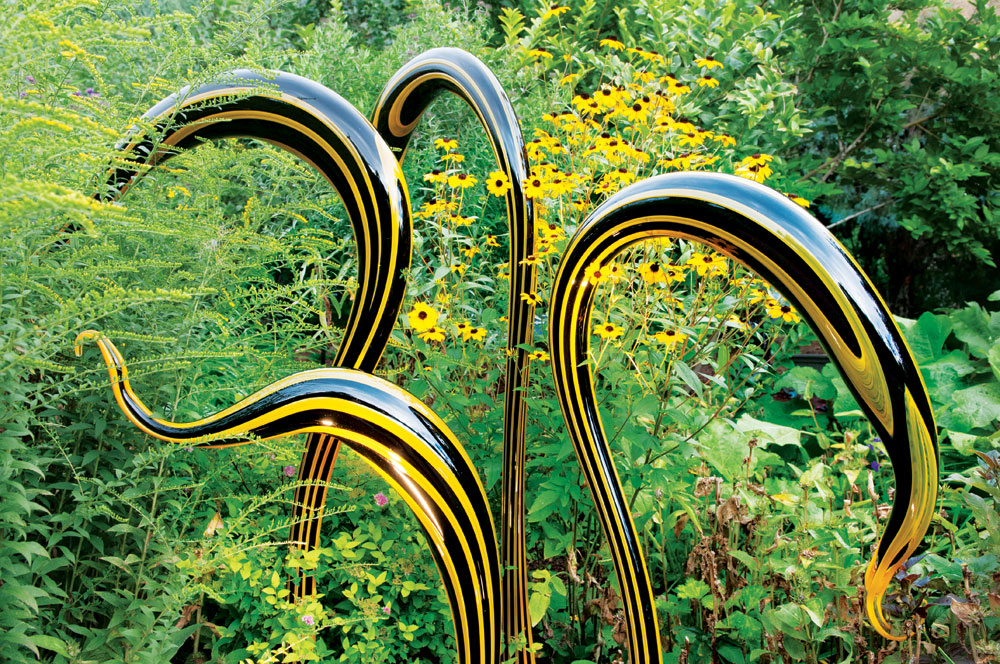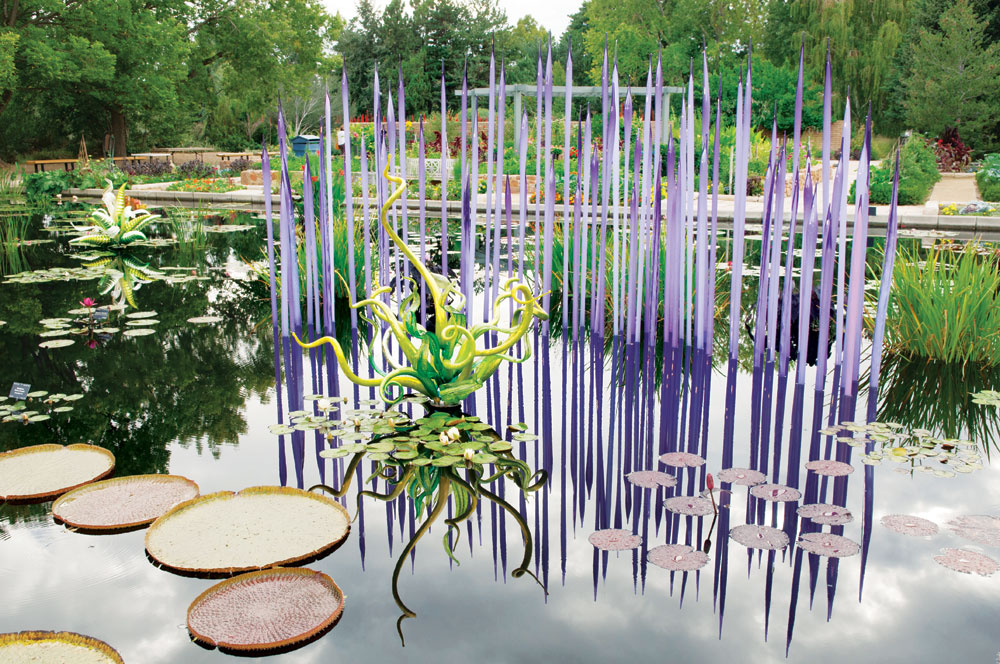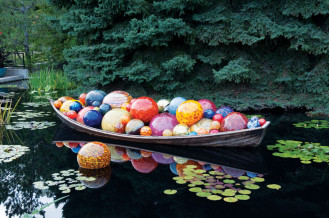 In the spirit of Halloween, the Denver Botanic Gardens is in full costume. Seuss-like silica spikes, crazy crystalline citadels and psychedelic petals ooze from the landscape. Rather than being tropical plants gone wild, these features are made of glass.
In the spirit of Halloween, the Denver Botanic Gardens is in full costume. Seuss-like silica spikes, crazy crystalline citadels and psychedelic petals ooze from the landscape. Rather than being tropical plants gone wild, these features are made of glass.
Glass is all around us, although typically less conspicuously than in the Gardens’ Dale Chihuly exhibition. It’s on our faces, our phones and our homes. But where does it come from?
Glass comes from sand. Some of that sand begins its journey in the Rocky Mountains.
Up on mountaintops like Pikes Peak, rocks such as granite are broken down by snow, wind, rain, plants and microbes. Bits and pieces of broken-up rock roll down the mountain into streams and rivers, where they’re carried out to the plains or to mountain-bound parks.

Twisted black and yellow glass by Chihuly, displayed at the Denver Botanic Gardens, appears like it might even belong in nature next to black and yellow flowers. Photos by Kyle Schroeder.
Translation: A “park” is what Coloradans call a “basin” or “valley.” The most famous one has its own TV show—South Park.
As particles make their downhill journey, they’re broken down into sand and dust-sized sediments. This mix includes minerals like shiny mica, pink feldspar, and if you’re lucky, a bit of gold. However the most common constituent of sediments is the mineral quartz—the key ingredient in glass.
Such sand is everywhere, but to produce sand needed for glass, something special must happen. Nature first has to break sediments down and get rid of all the stuff that isn’t quartz. This happens naturally in lakes, beaches, rivers and streams. Deposits from these environments dominate Colorado’s lower elevation landscapes.
Wind is the most important cook in the kitchen, though. Because air isn’t very syrupy and doesn’t have much mass, wind can only pick up tiny particles.
It whisks away most of the dust-sized mineral grains, carrying them far, far away. Such miniscule grains can be blown clear over mountaintops. Sometimes this process is visible from outerspace—just Google a satellite image of the Saharan dust cloud off western Africa.
Heavier, bigger mineral fragments get left behind.

Brilliantly colored and imaginative glass forms, like these by Chihuly, derive from mineral additives blended into melted sand. Such compounds help impart color to the glass, make it easier to melt, and give it better structural properties.
 But the “middle-sized” grains, like quartz, get rolled, bounced, and sometimes picked up by the wind. These grains can’t be blown far or high, so they tend to pile up over millennia at the feet of mountain ranges, or where wind regularly slows or becomes turbulent. In our very own San Luis Valley, giant quartz-rich dunes have formed by these very processes. If the dunes weren’t in a national park, they’d make good glass sand!
But the “middle-sized” grains, like quartz, get rolled, bounced, and sometimes picked up by the wind. These grains can’t be blown far or high, so they tend to pile up over millennia at the feet of mountain ranges, or where wind regularly slows or becomes turbulent. In our very own San Luis Valley, giant quartz-rich dunes have formed by these very processes. If the dunes weren’t in a national park, they’d make good glass sand!
The best glass sands, though, are underfoot. There, thousands of ancient dune fields have become petrified as vast layers of sandstone. A great example is Colorado’s Lyons Sandstone, which represents a 265 million-year-old dune field that stretched from Mexico to Canada. You’ve seen this rock before—cladding buildings at the University of Colorado, as sidewalks in Old Denver, or perhaps even in your garden pavers. Sandstones like this are mined around the world for glass sand—largely because Mother Nature has already sorted the quartz grains and broken down all the other mineral constituents. Quartz sand from such rocks is also the key ingredient in fracking fluids.
In its purest form, quartz sand ought to make clear glass. But even the best dune sand has some impurities in it. A common one is iron, the same element that helps give Red Rocks Amphitheatre its vivid colors. To quell the effects of such contaminants, powdered mineral compounds can be added to clarify glass. One of the most common historical additives was the mineral pyrolusite, whose manganese helped neutralize the effects of iron impurities. But it had a side effect—the manganese caused the glass to turn purple after long exposure in sunlight. Once viewed as an unfortunate flaw, this purple window glass is now a sought-after mark of authenticity for antique windows and bottles.
And those fabulous colors used by Dale Chihuly? Most of them derive from mineral additives blended into melted sand. Such compounds help impart color to the glass, make it easier to melt, and give it better structural properties.
Even metals are added—like the silver compounds that help prescription glasses darken when exposed to sunlight. But my favorite is red glass. To give glass a red color you’ve got to add gold to it. And I’ll bet some of it comes from Colorado.
James Hagadorn, Ph.D., is a scientist at the Denver Museum of Nature & Science. Suggestions and comments are welcome at jwhagadorn@dmns.org.




0 Comments